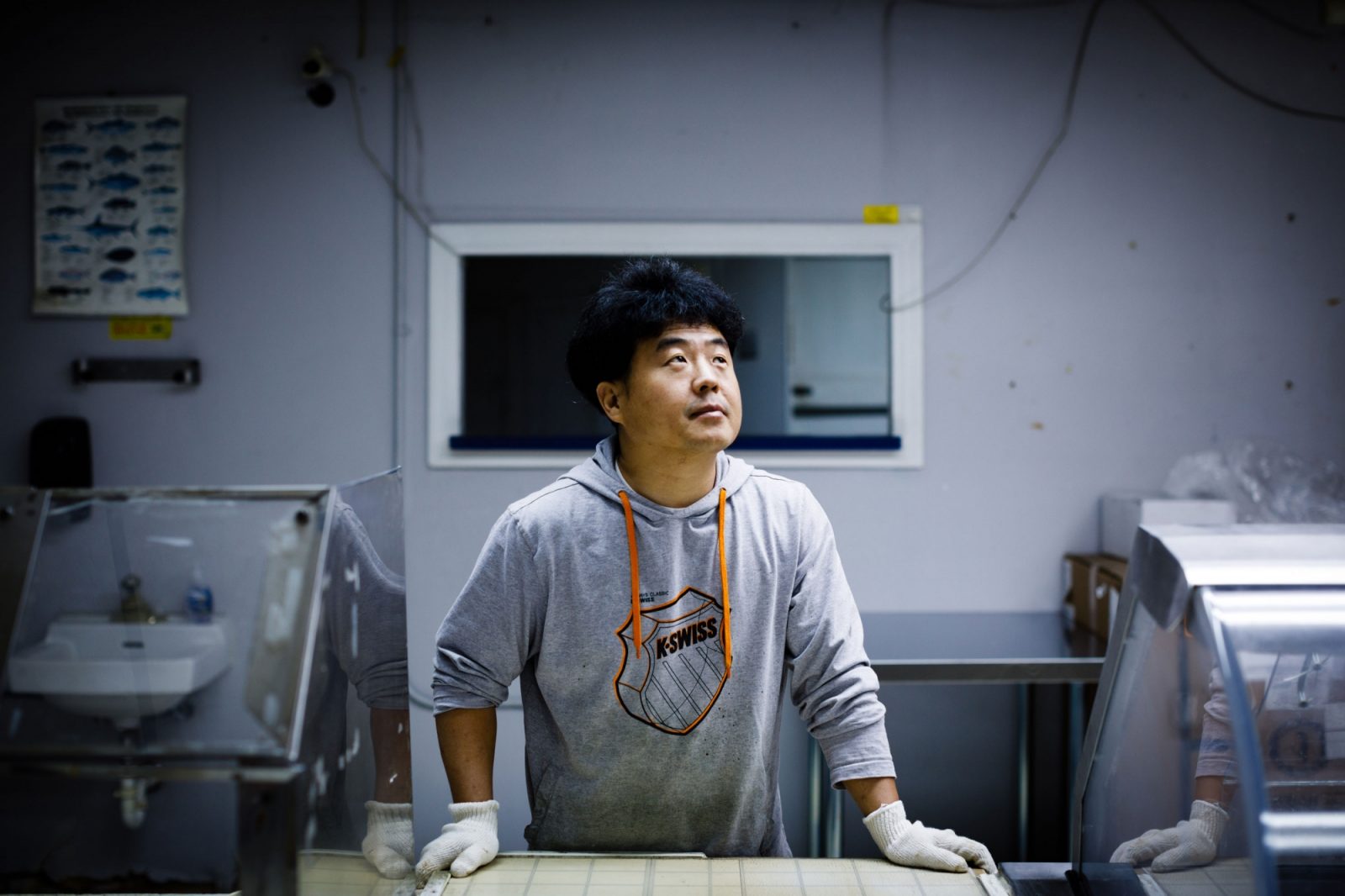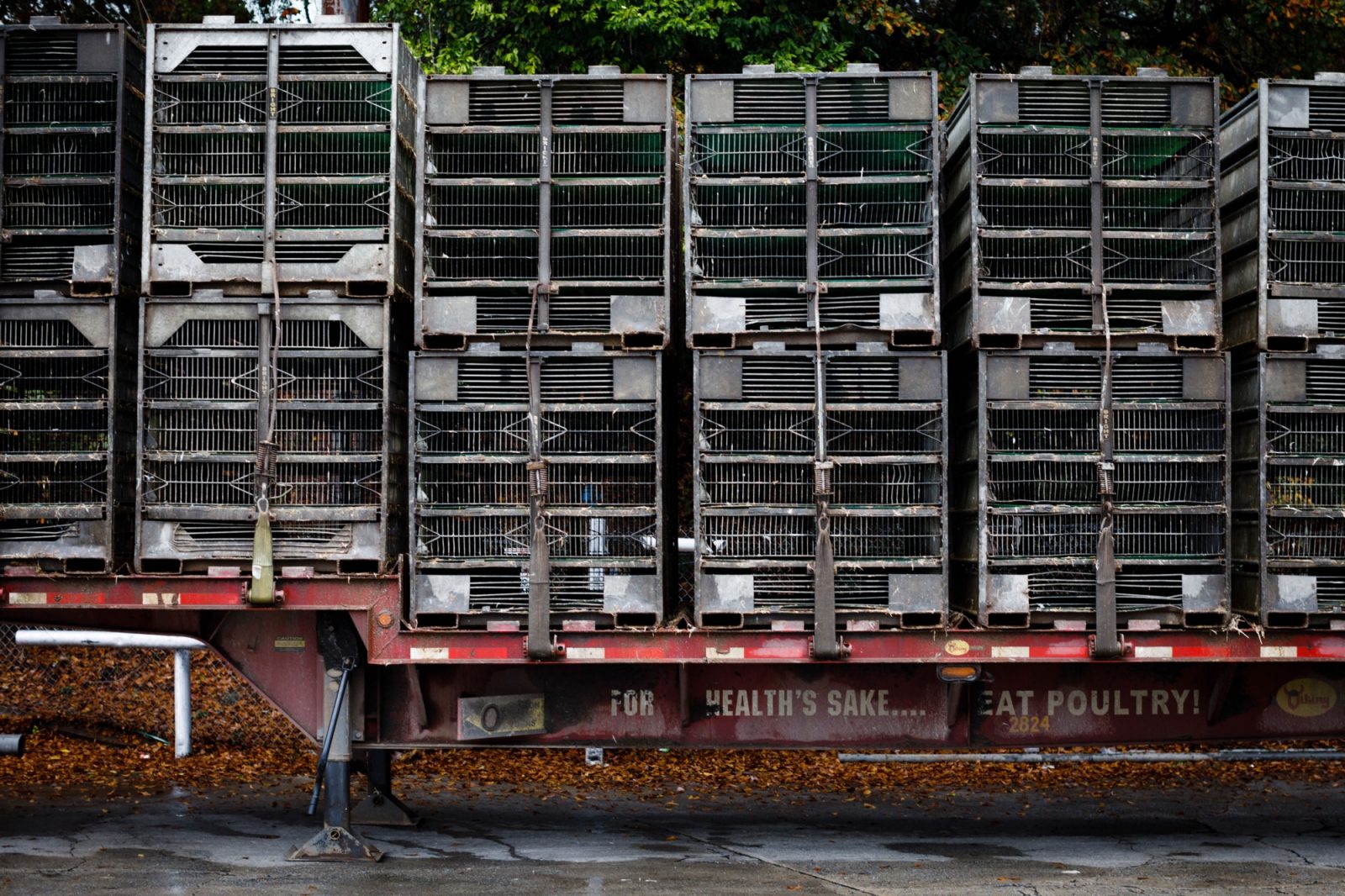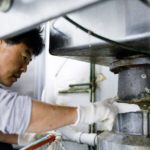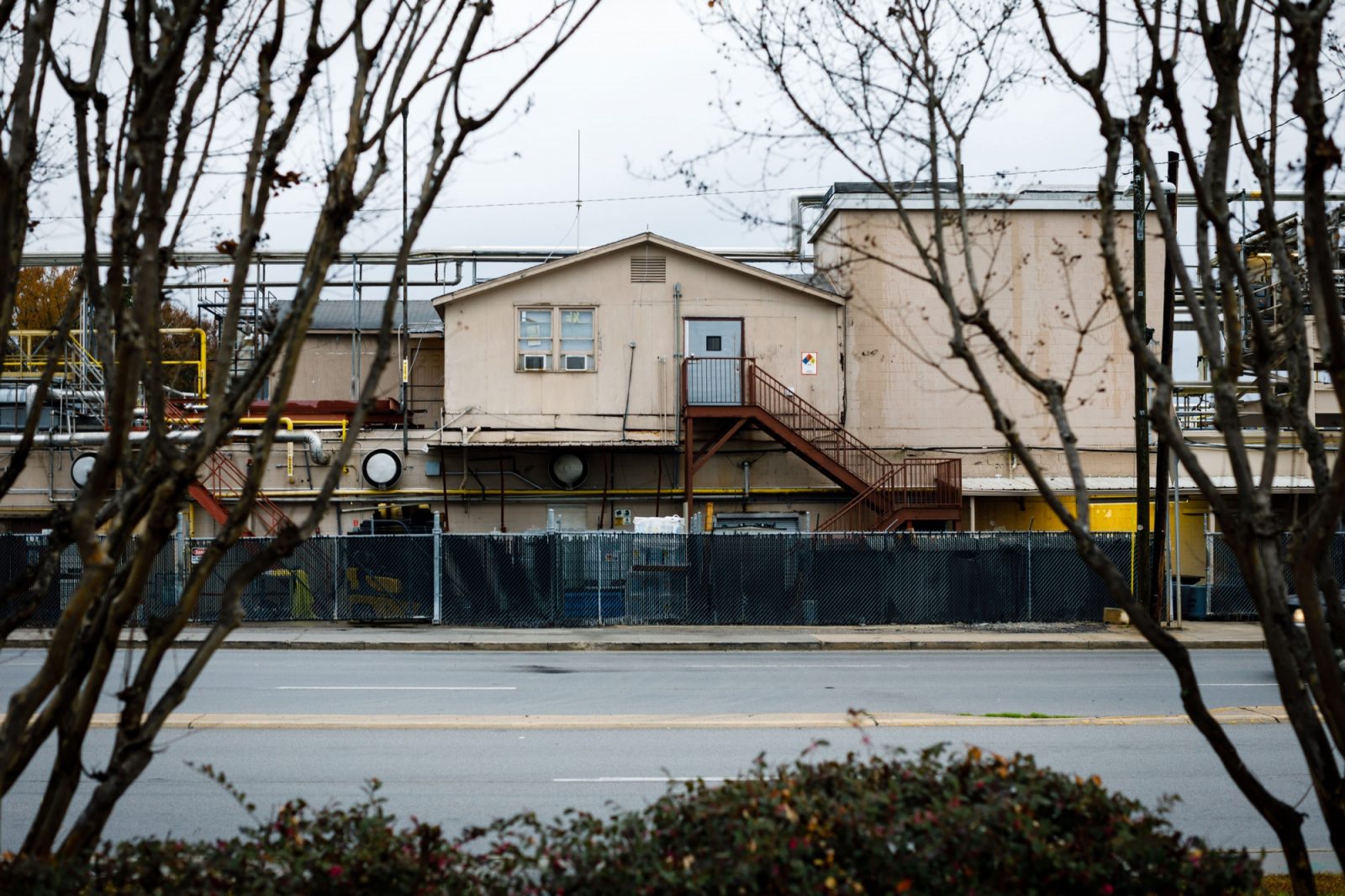ProPublica: Who Would Pay $26,000 to Work in a Chicken Plant?

A computer engineer in South Korea, Yongho Yeom worried about the future of his two young daughters in the country’s high-pressure education system. He worked in a chicken plant to obtain a green card to immigrate to the United States. (Dustin Chambers for ProPublica)
by Michael Grabell | Dec. 28, 2017
Chicken plants have recruited thousands of foreign workers in recent years through a little-known program to fill jobs they say Americans won’t do.
The first week Yongho Yeom worked on the chicken line at the House of Raeford poultry plant was like nothing he had ever imagined as a computer engineer in South Korea.
Supervisors clocked him as he rapidly maneuvered scissors again and again to cut bones out of raw chicken thighs. The plant was cold to prevent spoilage. And the slaughtering of chickens created an awful stench.
“It hurt a lot,” Yeom said. “All of the Korean workers, we all had some sort of chronic symptoms or pain, and some would lose their nails.”
Yeom, now 46, had landed in South Carolina in 2015 after researching how to immigrate to the United States. At the time, he was living in Daejeon, a technology center about 90 miles south of Seoul and worried about the future of his two young daughters in Korea’s high-pressure education system, where many children spend additional hours each day in private “cram schools.” He also believed pollution blowing in from China was making him ill.
Online, he came across the website of a Korean migration agency, which said House of Raeford, a large chicken processor, was sponsoring foreign workers through a little-known green card program designed to fill unskilled jobs that U.S. employers say they can’t find American workers to do.
Over the past year, ProPublica has documented how chicken plants and other low-wage industries rely heavily on unauthorized immigrants and refugees, often mistreating them, and in some cases, using their immigration status to get rid of workers who are injured or fight for better conditions.
In the last few years, the nation’s poultry companies have found yet another way to get cheap and willing labor to do the grueling work of processing tens of thousands of chicken carcasses each day for fast-food restaurants and supermarkets across the country.
Ideally, the program, known by its category EB-3 (Other), could offer a lifeline for businesses facing legitimate labor shortages while providing a pathway to citizenship for unskilled immigrants. Companies that participate would need to show good-faith efforts to hire American-born workers first, improving wages and conditions in the process.
But as the program has accelerated in recent years, it has been co-opted by a handful of companies and foreign consultants who have used it to bring in immigrants willing to work for low pay in often-dangerous jobs. In the U.S., the program is now dominated by a handful of poultry processors with poor safety records, one janitorial firm and a single fast-food franchisee. Overseas, a cottage industry of migration agents has popped up charging steep fees for “migration assistance,” even as the law bars the selling of green card sponsorship and other recruiting fees.
And under the program, U.S. companies aren’t obligated to do much to first persuade Americans to take their jobs. They merely have to place two want ads seeking American workers in the local Sunday newspaper and a notice on the state jobs board — not raise pay or improve work conditions.
U.S. Citizenship and Immigration Services and the Labor Department have increased scrutiny of the unskilled green card program over the past year. But even now, House Republicans are pushing a bill that could help the meat and poultry industry bring in more than 10 times as many foreign workers a year with few of the protections provided by the green card program.
The bill would expand another visa program for agricultural guest workers to meat and dairy processors, which usually can’t obtain guest workers because their jobs aren’t seasonal. Instead, it would let them hire the workers year-round. The pay would be below the prevailing wage in many areas. And workers’ legal status would be tied to their employers, preventing them from quitting to seek higher wages or better conditions.
Unlike EB-3, guest worker programs for farmworkers (H-2A) and seasonal workers (H-2B), which are larger and receive more attention, do not provide a path to permanent residency or citizenship.
The unskilled green card program has remained little known in part because from 2001 until 2013, it was virtually closed, with waits of six to eight years to get a visa. But that year, the backlog started to clear, spurring aggressive advertising in South Korea, China and Vietnam.
Demand is now so high that some foreign migration consultants have developed a lucrative niche charging between $20,000 and $130,000 for assistance accessing the jobs offered by employers in the program, which usually pay less than $20,000 a year. Turning the common immigration narrative upside down, the program often attracts middle-class professionals, such as engineers like Yeom and office workers, who are willing to take a steep fall down the economic ladder for the chance to raise their children in the U.S.

A trailer used for hauling live chickens from the farms outside the House of Raeford plant in West Columbia, South Carolina (Dustin Chambers for ProPublica)
Like unauthorized immigrants, EB-3 immigrants are similarly compelled to accept poor work conditions, often having made a one-year commitment in exchange for the green card sponsorship.
Jinhee Wilde, a Maryland immigration attorney, handles EB-3 cases for poultry processers like Case Farms, which was featured in an earlier story by ProPublica. The Labor Department has certified 568 foreign workers for Case Farms in the past three years.
Wilde says the program serves a legitimate need and that sponsorship carries enough costs and hurdles that employers wouldn’t do it if they didn’t have to. Many new hires in jobs like chicken processing leave after a few weeks or even just a few days, she said, but EB-3 workers agree to serve a much longer stint.
“Employers have a need for workers, whether unskilled work like chicken processing that no one wants to do it seems, or high-tech companies that need specialized skills,” she said. “Otherwise, the economy is going to come to a screeching halt.”
Critics say poultry companies could attract U.S. workers if they improved safety, decreased line speeds and paid a living wage.
“That’s why these jobs are so undesirable,” said Alex Galimberti, who leads the poultry worker campaign at Oxfam. “It is not surprising to me that some of the companies that are known as the lowest players in the industry, as far as working standards, are the same ones that are trying to take advantage of this visa program.”
“To me,” he added, “this just looks like a scheme to keep standards low.”
Beginning at the end of the Obama administration and accelerating under President Donald Trump, U.S. immigration agents and embassy officials have been clamping down on the program and increasing reviews of visa petitions, according to immigration attorneys, employers and foreign workers.
ProPublica also found a severe slowdown in the processing of applications at the Labor Department, where the number of decisions for unskilled jobs has been cut in half while the denial rate has nearly doubled. The freeze was even more evident for poultry jobs, where about six out of 10 applications were denied — more than triple the rejection rate from the year before.
A Labor Department spokesman said there has been no policy change under Trump, but couldn’t provide a reason for the slowdown. In response to questions, a spokeswoman for Citizenship and Immigration Services pointed to recent comments made by the agency’s new director, L. Francis Cissna, who said that the new scrutiny of visas “reflects our commitment to protecting the integrity of the immigration system.”
Wilde said immigration agents are questioning why white-collar Koreans would want to pay tens of thousands of dollars to cut chicken.
“They are sacrificing themselves for the futures of their children,” she said. “That is no different than any other immigrants in American history.”
Based in Rose Hill, North Carolina — home of the world’s largest frying pan — House of Raeford ranks among Apple, Google, Microsoft and Amazon as one of the biggest sponsors of green cards. The chicken processor, which employs 4,300 people at seven plants, has applied for 1,900 foreign workers in the last three years, according to Labor Department data. The company also ranks among the most dangerous poultry processors in the country, according to a ProPublica analysis of safety violations, with many workers suffering crippling hand injuries.

eom, 46, makes some repairs as he prepares for a health inspection for his new restaurant. Yeom bought a fish market after working in the chicken plant for 13 months. (Dustin Chambers for ProPublica)
Yeom said he paid $26,000 to the migration agency from his family’s savings and, in about a year, arrived at the plant where he started on the graveyard shift at $8.50 an hour, rising to $10.25 after the first three months. The rapid, repetitive motions were challenging, he said.
Several former EB-3 workers interviewed for the story had similar experiences. While the work was abhorrent and sometimes humiliating, they were willing to endure it because they had received the opportunity to become permanent U.S. residents and potentially citizens.
While the law doesn’t spell out how long immigrants have to stay with the sponsoring employer, some migration agents require workers to sign six-month or one-year contracts. Yeom said he didn’t have to, but still felt he had a duty to stick it out.
“I thought it was a promise, so I decided to keep the promise, and also, I thought about all the other Korean workers who are trying to come to the U.S.,” he said, “because if I quit prematurely, I thought it might somehow disadvantage my fellow Korean people.”
About 54 percent of all immigrants who received green cards through the program in fiscal year 2016 were from South Korea. Another 16 percent came from China.
The origins of the EB-3 program date back to the 1965 immigration act when Congress created a green card category for “skilled and unskilled workers in short supply.” Congress reorganized the immigration categories in 1990, but left a maximum of 5,000 green cards every year for jobs requiring no education and less than two years of training or experience.
The program became increasingly popular with chicken plants and middle-class Koreans in the 1990s. But a 2000 law, which created a short window for people who entered illegally or overstayed visas to apply for permanent residence, led to a flood of applications that virtually closed the program in the 2000s through the early part of this decade.
As the program began to reopen, migration agents in Korea, China and Vietnam saw an opportunity to advertise it as a fast track to the American dream, especially as fast-food franchisees began to seek workers for jobs at restaurants like Pizza Hut or Burger King.
“Your chance to immigrate is at your fingertips,” says one ad posted on the website of a Vietnamese migration agency. “People who have visited the United States all praise, admire and sigh in exclamation at the never-ending green,” touts another in China. “There are trees, grass, flowers everywhere.” “Do not miss this opportunity!” “Only $70,000 and you can apply for a U.S. green card and give yourself and your family a beautiful future!”
The law prohibits “the sale, barter or purchase” of labor certifications and requires employers to pay all fees associated with the applications. But the law leaves open fees related to “migration assistance,” such as explaining the different ways to immigrate to the United States, translating official paperwork and helping families get settled in a new country, said Wilde, the Maryland attorney.
Some foreign migration agencies, whose websites were translated by ProPublica, play by the rules, simply offering information about visa requirements and the community, schools, cost of living and apartment rentals around the sponsoring employers.

A House of Raeford chicken plant in West Columbia, South Carolina. The poultry processor has sought to sponsor 1,900 foreign workers through the EB-3 program in the last three years. (Dustin Chambers for ProPublica)
But other agencies cleverly disguise recruitment fees as “settlement services” or “assimilation packages,” charging inflated rates, said David Hirson, an immigration attorney in Costa Mesa, California. One ad in China, where demand for visas is so high that the wait under the program is 11 years, lists the going rate to migrate through Burger King and Pizza Hut at $130,000.
Hirson said any such fees to middlemen should be suspect because they are essentially reducing the foreign workers’ pay below the prevailing wage.
“They are effectively paying an agent to get them the job,” he said.
But Yeom didn’t see it that way.
Last year, after the savings he brought from Korea ran out, Yeom took on a second job at a fish market. He would come home from the chicken plant at 8 a.m., massage his hands with warm water, eat breakfast and go to the fish market, where he worked from 10 a.m. to 3 p.m. Then he’d return home, spend time with his kids and sleep for four to five hours before getting up for his midnight job at House of Raeford.
After 13 months at the chicken plant, Yeom quit and worked full time at the fish market. Seeing that business was good, he decided to open his own.

Yeom stands outside the vacant fish market he recently bought in a low-income neighborhood north of downtown Columbia. (Dustin Chambers for ProPublica)
“It was very, very difficult work; there’s no question about that,” he said. “On the other hand, I feel thankful and even grateful because without any specific skills or any prior education, they provided a sponsorship through this chicken plant. For us who want to come to the U.S., it’s a very valuable program.”
Sisi Wei, deputy editor for news applications, contributed to this report.